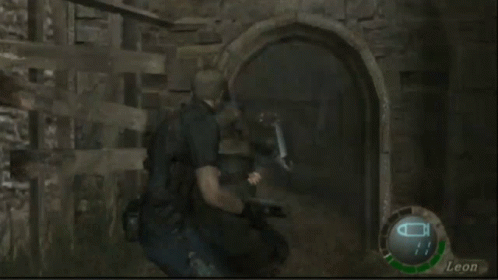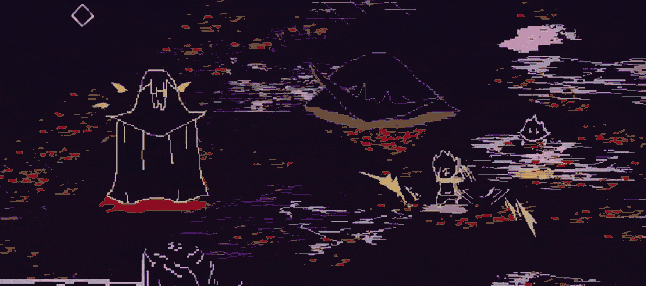Trending
Opinion: How will Project 2025 impact game developers?
The Heritage Foundation's manifesto for the possible next administration could do great harm to many, including large portions of the game development community.
Be brave; be beautiful – even if you don't feel it.

Death of a Wish features a style meter, a system which rewards points for landing attacks while avoiding damage in combat encounters. An uninterrupted string of consecutive strikes is called a combo, and longer combos give higher scores in an encounter. Sustaining combos past a certain length will introduce score multipliers. Each encounter has a few score thresholds that need to be surpassed in order to achieve a specific rank: S, A, B, and C.
Corruption is a percentage-based statistic that goes up every time the player takes damage or dies, and it is not reset upon death. If Corruption passes 100% then the player will trigger a game over in the form of the game’s bad end. Corruption can be reduced by achieving high ranks in combat encounters. Finish a fight with an S-rank, and your corruption will go down by 3%. Thus, the player manages their Corruption by scoring high under this combo system.
Jesper Juul writes that “valorization of the outcome” is a fundamental aspect that defines games. This means that “some of the possible outcomes of the game are better than others”. Games create tension when positive outcomes are more difficult to create than negative outcomes. Because positive outcomes are valued as goals, players will extend effort to achieve them, optimizing their behavior and engaging with the game’s systems to increase their likelihood of achieving that outcome. This is fundamental to understanding style meters since they affect what kinds of outcomes are valorized.
PERFECT PLAY AND SURVIVAL
In most linear action games, the player’s most common short term goal is to survive the next combat encounter in order to progress the story. In an encounter, the player can fail and die, which is the undesirable outcome that blocks progression towards long term goals. Surviving the combat encounter is the valorized and desirable outcome. Depending on the style of game, survival may entail defeating enemies, sneaking past them, or running away from them.
Generally speaking, when survival is the sole metric of success, players will optimize for efficient play. Efficient play is a style that aims to resolve combat encounters as fast as possible while minimizing risks of failure.

In Demons Souls, efficient play may manifest as conservative, shield-centric play, whittling enemies down with magic attacks, and exploiting cheese tactics. In Genshin Impact, this may manifest as executing the same powerful taser team combos or exploiting Zhongli’s powerful Jade Shield. In Resident Evil 4, efficiency might mean upgrading only the starter pistol and shotgun, and reusing the same knee-shot to roundhouse kick approach to resolve most group encounters. To choose, say, a low-tier character in Genshin Impact because you like their backstory more, or an alternative build in Dark Souls, is to consciously choose to play suboptimally.
In games that encourage efficiency, there is an aspect of perfect play. There are behaviors or strategies that lead to the best possible outcomes in most scenarios. In these games, it is clear what optimal play looks like, and success ends up becoming about following the implicit directions specified by the games systems. Success thus becomes about how closely the player can mimic perfect play. This instructional style of combat is ultimately a very different type of fun than what “stylish action” games aspire to, perhaps more akin to the call-and-response play of rhythm games, where perfect play is akin to successfully performing a song.
THE EXPRESSIVE POTENTIAL OF COMBAT AND STYLE METERS
The style meters presented by character-action games like Devil May Cry 4 and Bayonetta add a secondary metric of success beyond survival. While surviving is still the primary goal in battle, being scored and ranked on using varied moves during an encounter introduces a different, contradictory goal in combat encounters. Repeating the same optimal attacks will result in diminishing scores on the style meter, so players are challenged to consider variety to their combat decisions. The style meter thus encourages players to explore the full possibility space afforded by a game’s systems by not valorizing efficient, survival-oriented play within the context of this secondary goal. It introduces a form of the lusory attitude where players accept inefficient means of accomplishing a goal in order to make that experience more challenging and exciting. With these games, defensive play still tends to be instructional since blocks and parries are reactions to enemy behaviors, so offensive play is where this expressive play has its full potential

The emergent properties of games allow for player expression to be a core play aesthetic. In most games, this manifests as “creative play”, like building custom structures in Minecraft. The broad movesets of character-action games, and the valorization of varied play introduced by style meters, allows behavior in combat to become a form of performance and improvisation.
By making decisions about what moves to use in a combat scenario, players can craft highly characteristic action sequences that are unique to their personal playstyle. The emergent depth of these systems has allowed a whole scene of “combo videos'' to proliferate on YouTube, where skilled players create and share clips of impressive plays that they were able to accomplish. In a way, combo videos like the ones created by SunhiLegend represent a form of improvisational fight machinima utilizing gameplay as a performance medium. While this may not be the same “creative play” afforded by Minecraft or LittleBigPlanet, style meters encourage a form of freeform action within a broader structure of rules akin to improvised solos in a Jazz performance, freestyle dance, or skate videos.
STYLE, ECONOMIES, AND PLAYER MOTIVATION
Extrinsic rewards are important to understanding style meters because they aid progress towards long-term goals. In Devil May Cry and Bayonetta, high ranks reward in-game currency that can be spent on upgrades like new moves, items, passive skills, and cosmetics. In Tony Hawk Pro Skater, high ranks reward tokens that can unlock new stages and aid progression. While resolving a combat encounter efficiently might solve the immediate goal of progressing to the next one, the player will lose out on in-game currency for character upgrades. This adds a negative feedback loop that will make the game more difficult if the player does not aim for high ranks.

The issue with rewarding in-game currency in a character-action game is that certain players can ignore these systems because the purchasable upgrades are seldom essential to progression. These games are tuned in a way where statistical progression is never critical to success like in RPGs. It is thus possible for a player to ignore the rank system in Devil May Cry 3, play in the simplest and most efficient manner, and complete the game while never spending orbs. This can result in a suboptimal player experience where the expression play-aesthetic never gets across.
Born of a Dream and Death of a Wish make engaging with the rank and style systems essential because high ranks reduce Corruption. If the player plays in an overly cautious, simple, and efficient manner, they will not be able to manage the rising Corruption percentage and will repeatedly trigger the game-over state. Thus, in order to succeed in these games, players must vary their attacks to craft flashy and expressive combos, avoid combo-breaking damage, and engage with secondary systems and mechanics like build variation, taunts, and dodge offset. It is not enough to survive in Death of a Wish, players must thrive. Death of a Wish thus makes optimal offensive play improvisatory and expressive, without strictly mandating a clear vision of perfect play.
In Born of a Dream, we used the style meter to craft a procedural rhetoric about developing the strength to accept yourself in a world that won’t. Born of a Dream was about learning how to be beautiful, strong, and self-assured, and this was expressed in the evolution of the combat as the player levels up and progresses, and through the story with how suppressing identity to be accepted by society causes conflict.
We are doing something different thematically with Death of a Wish and how the newly termed grace gauge works. We’re excited to share this new, meaningful system to the world when the game releases in Winter 2024.
You May Also Like